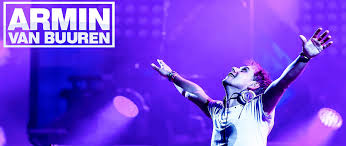Canadian music icon Neil Young did not show up on the second night of a tribute concert in his honour, but the sold out crowds at Vancouver’s Queen Elizabeth Theatre didn’t seem to mind. The three and a half hour set-list that contained more obscure than well-known renditions of Young’s prolific song-writing legacy left the audience happily humming, “Only love can break your heart.”
It was a night to remember, one that successfully bridged the gap between the ages – whether you were a die-hard Neil Young fan; or from the generation that tolerated his undeniable significance to North American pop culture, there was something here for you.
Featuring a starry line-up of Canadian and American musicians from celebrated musicians such as Lou Reed, Ron Sexsmith, Elvis Costello; spoken word artist Eric Mingus, son of jazz legend Charles Mingus; to the vanguard of young Canadian rockers including members of Broken Social Scene, Metric’s Emily Haines and New Brunswick-based singer Julie Doiron, accompanied by instruments that filled the entire stage; the show moved seamlessly song after song, with no noticeable lags.
There were many highlights, some predictable like stylish showman Elvis Costello jamming his trademark guitar to Love in Mind" (from Young's 1973 live record, "Time Fades Away") and later, rousing the crowd, in a sparkling gold jacket – Costello’s nod to Olympic Gold - and leopard print fedora, with renditions of "Cowgirl in the Sand" and "Cinnamon Girl."
Yet it was the unexpected moments that were memorable, like Metric’s Emily Haines and James Shaw doing “A Man Needs a Maid,” with the piano and chimes. Others: when great jazz guitarist James Blood Ulmner belted out “Scenery” in his vibrant deep tones - you knew something great was unfolding on stage; and Eric Mingus’s announcement, “these are the roots of music” followed by an urgent, spoken-word reinterpretation of “For the Turnstiles,” sound poetry that morphed from sharp beats to a showering cascade of noise.
The crew from Broken Social Scene did not disappoint, with Brendan Canning, Sam Goldberg and Bill Priddle staying true to Neil Young’s high-pitched crooning, while music director Joan as Policewoman’s energy lit up the stage.
Produced by Hal Willner best known for his work on Saturday Night Live, the evening, for such a highly choreographed event, had a spontaneous quality, with musicians reading out their songs and lyrics. Apparently, Willner only confirmed what they were going perform during the days before the shows – yet this wasn’t a deterrent, you could feel the artistic jamming happening on stage and it was good.
Fans were thrilled, “It was amazing,” said Vancouver resident, Fiona Campbell, “I’m going to go home and listen to some more Neil Young before falling asleep.”
She smiled and slipped out onto the still busy Vancouver night streets














